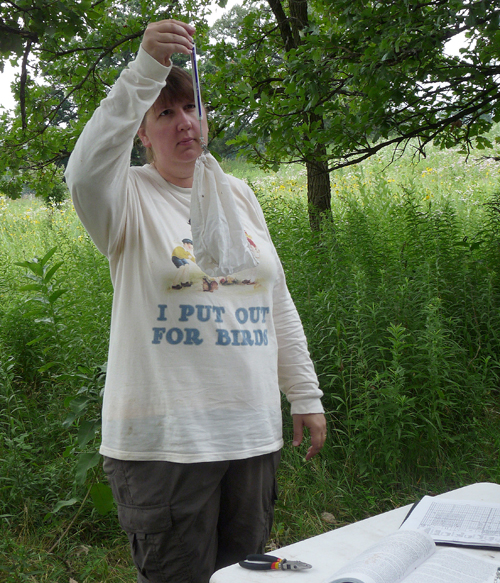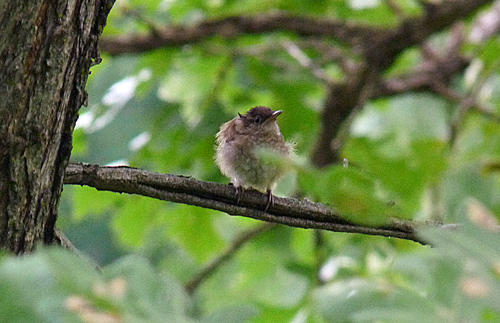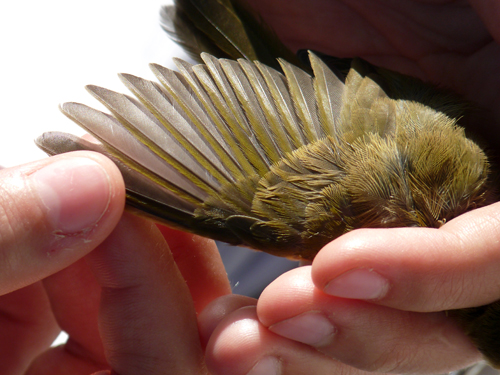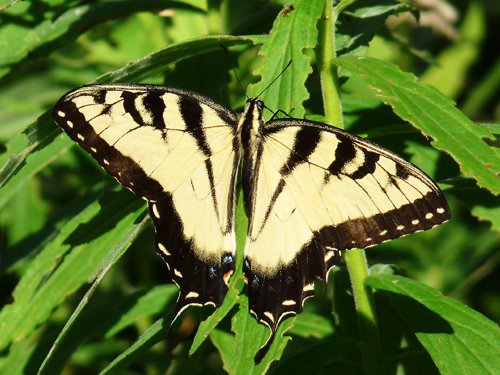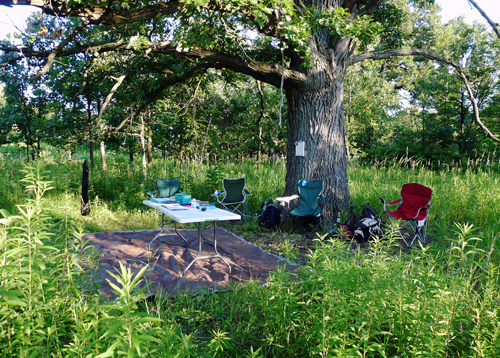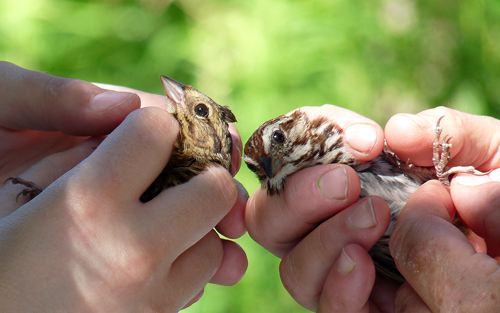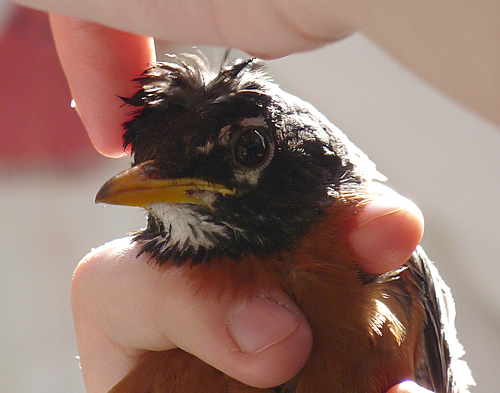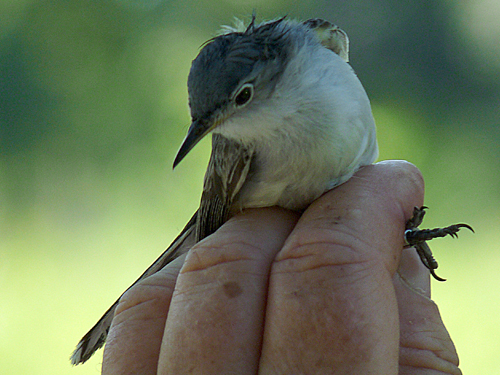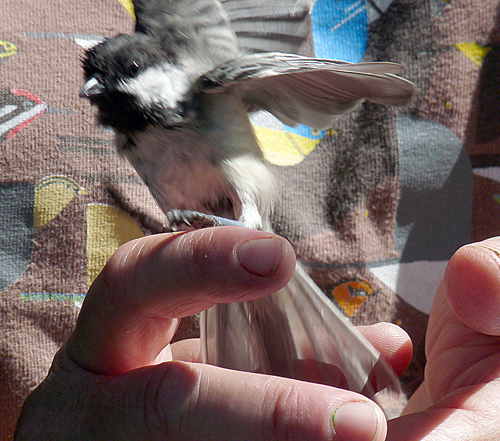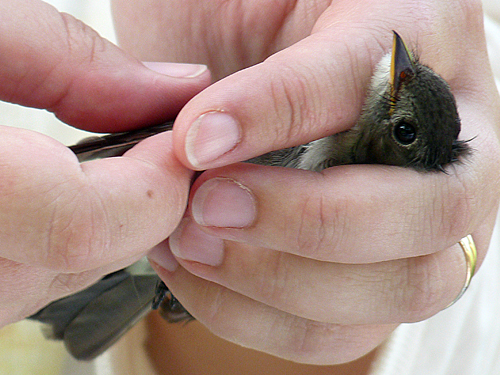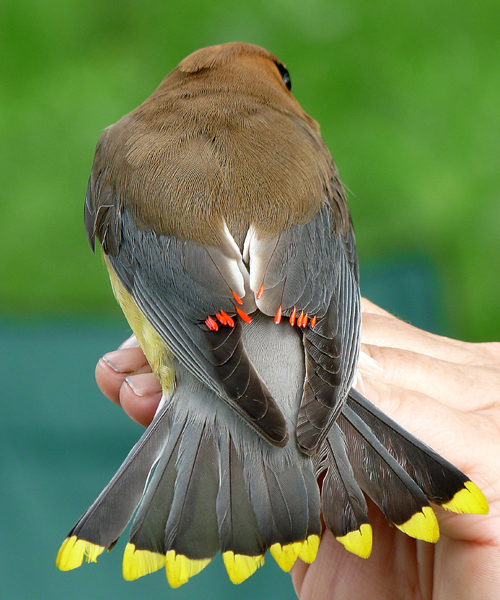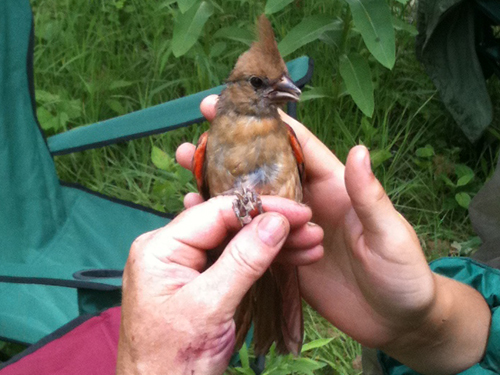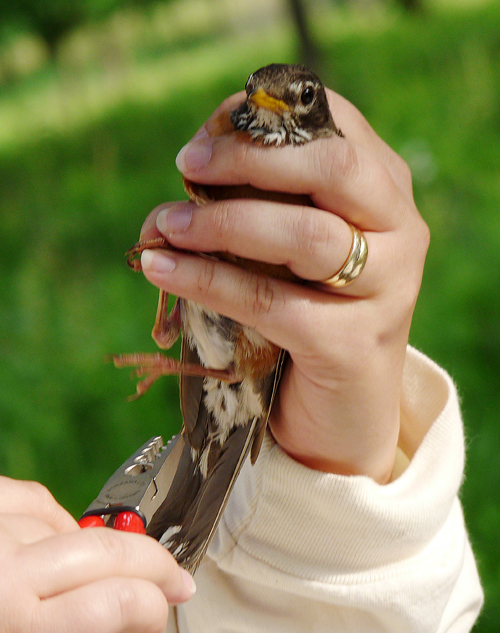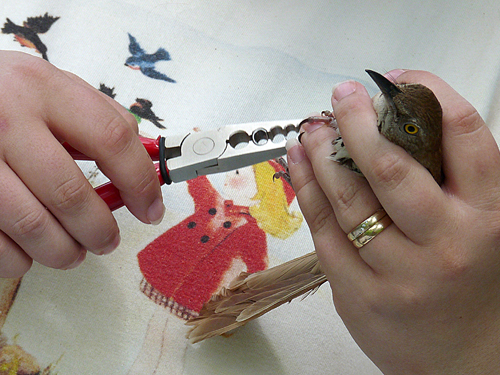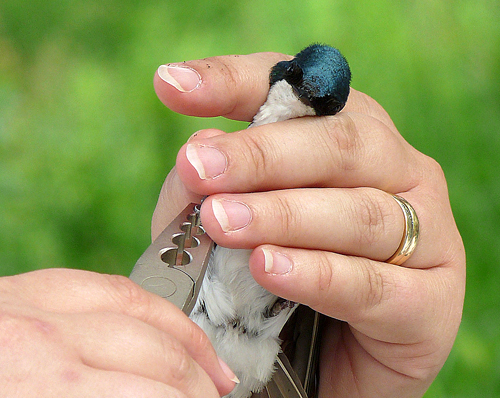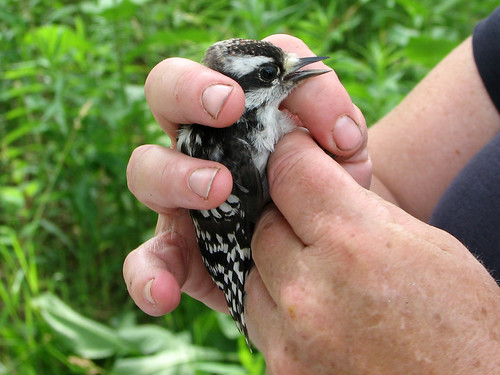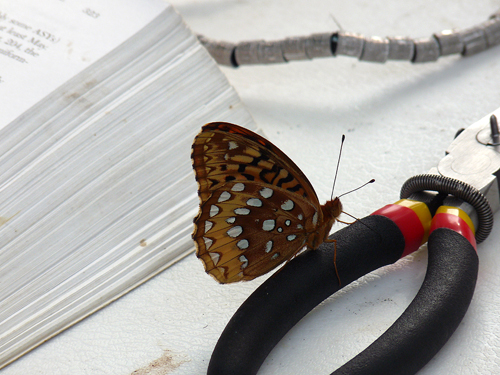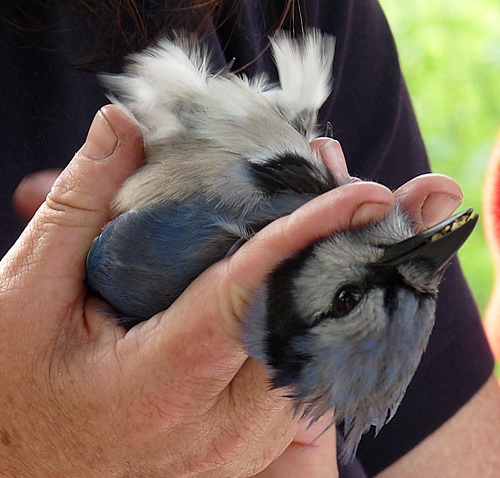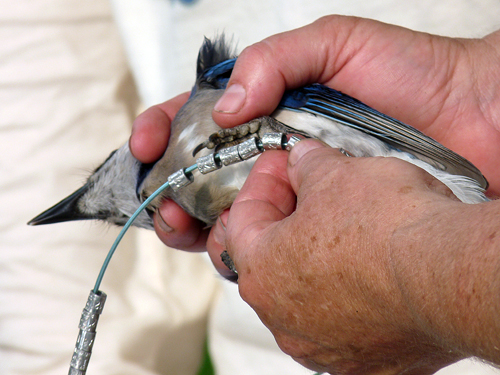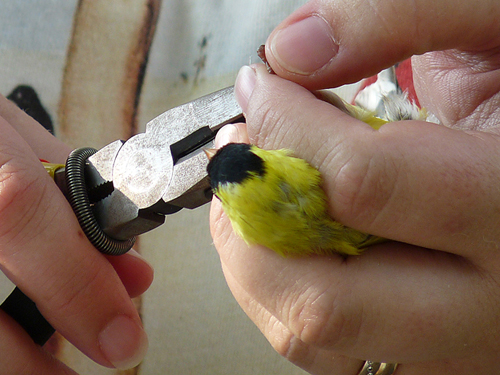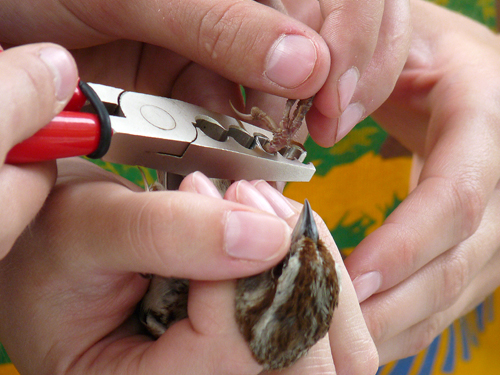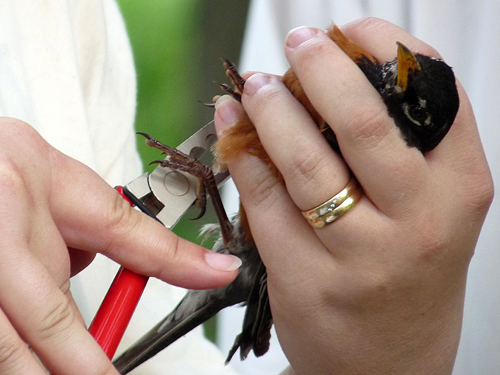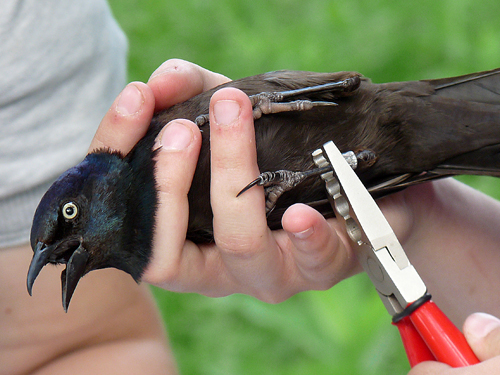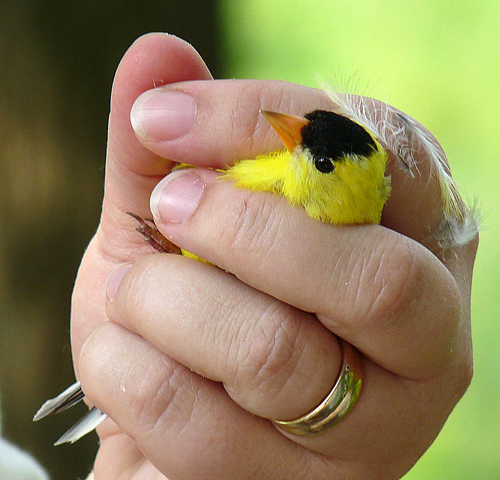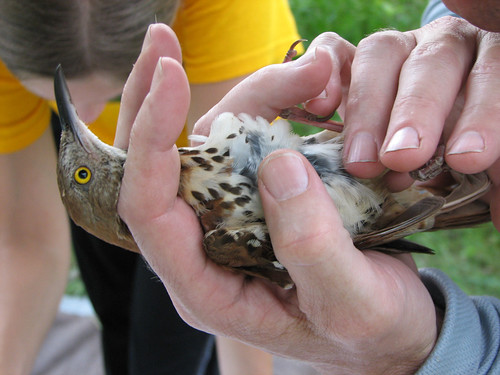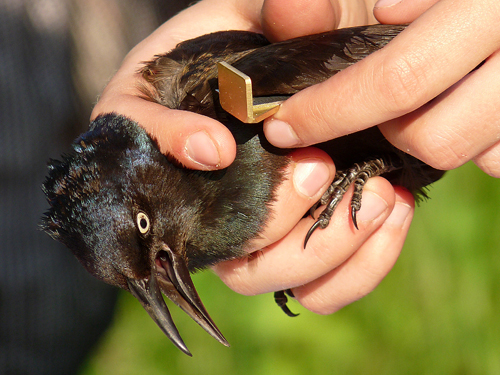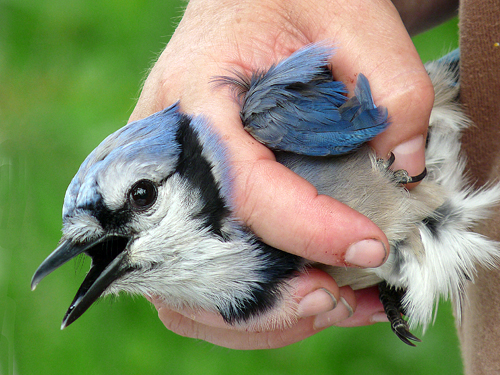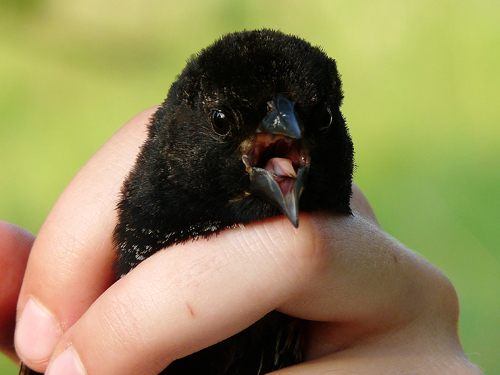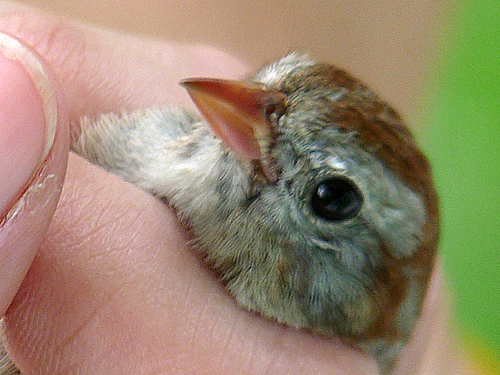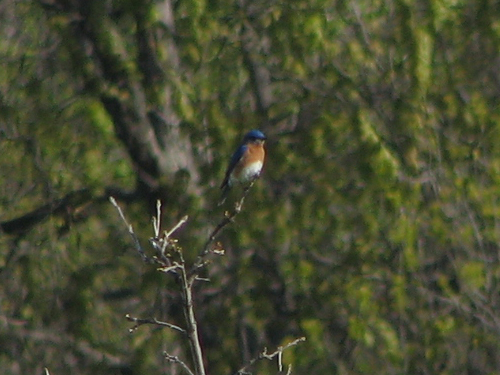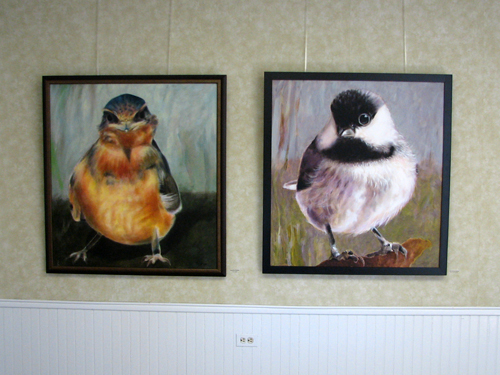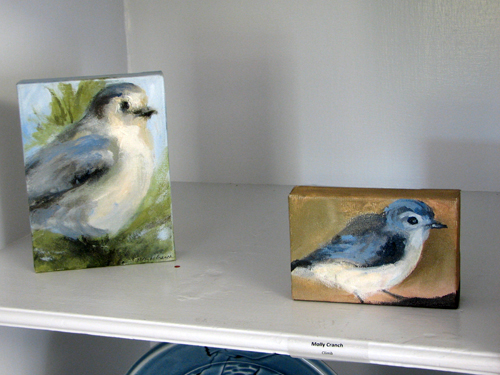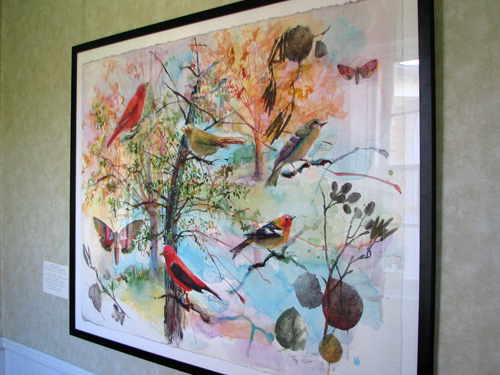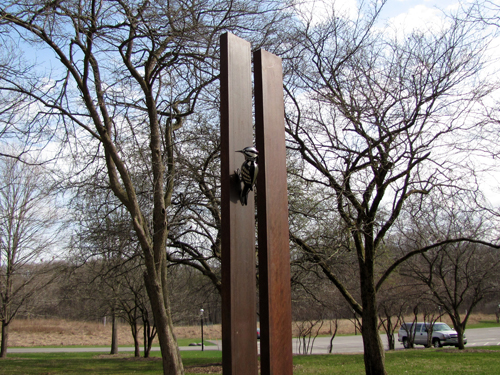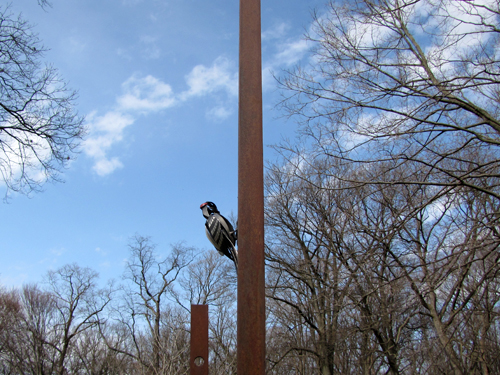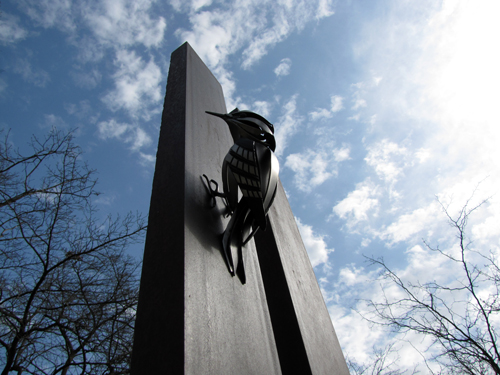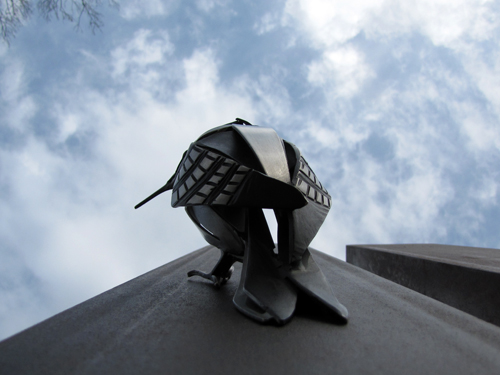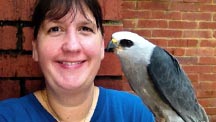Press, award, hiatus
Press
In just over two weeks, two events where I volunteered got some local press coverage. First, in July I handled at an owl program at a library in Lake Zurich. There were four of us there, with three handling. I had Pip the Barn Owl, who ended up being very photogenic, keeping his wings outspread much of the time. Lucky for me, I’m in half of the pictures. 😉 The event didn’t generate a story, but the photos are posted on the Pioneer Press website.
Then, last week, two local papers visited the banding station at Rollins Savanna. The Herald ran the story on their website the same day. The story is front (web) page news today on the Pioneer Press site. They even had a video of the team! There was a photo album as well, but the links are no longer available [as of March 2012 – ed].
Award
Late last month this blog was honored as a Top 50 Bird Blog by OnlineSchools.org. I’m humbled to find myself listed among so many top bloggers. Go check out the list: 2010 Top 50 Bird Blog Awards Winners. Nominations for the 2011 award can already be submitted. [OnlineSchools has discontinued their blog award program as of June 2012 – ed]
Hiatus
Arthur and I are traveling to the Netherlands this month. We will be visiting with family and friends, taking a short break in Paris, taking care of some business, and marveling at how much has changed since we were last in Holland (September 2008 – how time flies!). Hopefully we’ll be able to squeeze some birding in, as well, but I have a feeling blogging will be difficult. I have a few posts scheduled to run while I’m away, so this blog won’t drop off the radar completely during this mini-hiatus. I’ll be back with minty fresh blog posts in a few weeks! Until then, dear readers, please enjoy these last days of summer!



